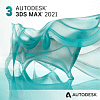 Autodesk 3ds Max
Autodesk 3ds MaxIf you can dream it, you can build it in 3ds Max®, the 3D software for modeling, animation, and rendering that allows you to create massive worlds in games and stunning scenes for design visualization.
Autodesk 3ds Max (formerly "3D Studio MAX" and "3D Studio") is the world's most popular 3D animation and visualization software. It can be used to create visual effects, character animation and game creation. 3ds Max offers an interactive user environment, fast rendering, tools for authoring virtual reality (VR) scenes. Its fully customizable and open architecture offers an absolute freedom for creative designers. There is a vast library of additional 3ds Max plug-in applications by third parties.
3ds Max is licensed as a 1- or 3-year subscription, separately or as a part of the Autodesk Industry Collections (incl. Media & Entertainment Collection). Students and educators can use a free license.
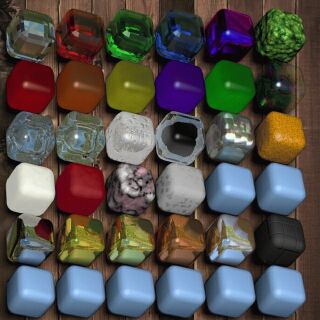 3D Studio MAX
3D Studio MAXAutodesk debuted 3D Studio MAX, a completely re-architected, Windows NT version of the world's leading professional 3D animation software as a successor to 3D Studio. Featuring an all-new real-time interface, support for graphics hardware acceleration and multiprocessor systems, and the first seamlessly extensible architecture in its market, 3D Studio MAX delivered full workstation-class performance and functionality to the desktop. In addition, Autodesk previewed the first 3D Studio MAX plug-in, a sophisticated application for animating two-legged skinned characters, called Biped (part of Character Studio).
"In 1990s, the combination of 386/486-based PCs and AutoCAD let Autodesk overtake IBM and become the global leader in design software, with a desktop product," said Carol Bartz, President and CEO of Autodesk, Inc. "To date, our 3D Studio product line has been tremendously successful, garnering nearly half of the entire worldwide market for professional 3D animation, on a relatively old operating system and modest hardware. 3D Studio MAX on Windows NT should have an 'AutoCAD effect' on the high-end 3D graphics and animation market: level the playing field in every respect except price, where we will win hands down."
Autodesk had 70,000 DOS-based 3D Studio customers. Then it offered technologicaly superior 3D Studio MAX and VIZ.
3D Studio MAX incorporates numerous technology advancements, which improve functionality and performance, including:
Using the Heidi graphics design structure developed by Autodesk, 3D Studio MAX software provides greatly accelerated shaded 3D graphics performance without hardware assistance. Through Heidi, 3D Studio MAX supports a wide array of graphic display devices, including the GLINT(R) chip set from 3Dlabs, which can provide TrueColor performance at two to four times MAX's 8-bit dithered performance. Using the Heidi technology, 3D Studio MAX drivers will also work with Open GL-based graphics cards.
An extensively multi-threaded application, 3D Studio MAX takes full advantage of the symmetric multiprocessing features of the Windows NT operating system. Thus, PCs with multiple CPUs can potentially apply more than one CPU to a single 3D Studio MAX operation, or assign individual processors to several MAX operations simultaneously.
New Geometry PipelineThe highly efficient geometry pipeline provides 3D Studio MAX users with quick wireframe redraw capabilities and the ability to run the product in any or all viewports in a rendered mode, at any screen resolution, with or without 3D hardware acceleration.
3D Studio MAX is designed to be rendering-solution independent--multiple software-based rendering solutions will be supported.
Following are some of the key areas of innovation and improvement within 3D Studio MAX that provide artists and animators with new levels of efficiency, control and creativity:
To make the product more intuitive to computer artists and animators, Autodesk has created a single environment within the 3D Studio MAX software. This means that even modeling and keyframing operations are seamlessly integrated, their results are apparent on-screen immediately, and those operations can be accessed without exiting other core MAX commands. In addition, all objects have an editable "data history," so earlier creation and editing commands can be accessed and nondestructively modified at any time and the changes will automatically be reflected in the current object state.
TrackView is a comprehensive timeline environment which enables precise manipulation of all the animatable tracks within MAX. An alternative way to view and control objects, TrackView provides a vertical "flow chart" of any subset of the objects in a scene, and all of the actions, effects and processes applied to those objects. TrackView lets animators bring sound files in to 3D Studio MAX and animate to music, and its function curve editor provides very advanced time editing controls including unlimited timing curves and notation tracks.
To facilitate the animation of scene-based special effects (i.e., black holes, explosions, etc.), a class of core component plug-ins called "Space Warps" has been incorporated into 3D Studio MAX. These plug-ins let users define sets of objects and modify them collectively in real-time, in shaded mode, as users transform them.
3D Studio MAX software's object orientation enables sophisticated referencing and instancing capabilities, thereby letting users work easily with highly complex scenes, and create deformation effects without the need for morph targets. 3D Studio MAX will offer full sets of both polygonal and spline-based modeling tools. Additionally, inverse kinematics (IK) is now a built-in core feature, accessible from an icon in the toolbar, and new IK features such as position and orientation pinning assist in character animation.
3D Studio MAX software will support plug-ins developed specifically for it, as well as a new category of highly integrated plug-ins known as "core components." Although it will not support plug-ins for previous (DOS-based) releases of the product, 3D Studio MAX has been enthusiastically embraced by all of the top 3D Studio plug-in partners, who are committed to delivering 3D Studio plug-ins and core components. Core components are Windows Dynamically Linked Libraries (DLLs) which are fully integrated with 3D Studio MAX itself. Because 3D Studio MAX is implemented as a series of DLLs, this method of "plugging into" the product effectively lets third-party developers build seamless extensions to the 3D Studio MAX software's core, using Microsoft's C++ class libraries and compiler. The API for 3D Studio MAX software will ship with each copy of the product.
By using the core component approach to plug-in development, developers can create tools that function mode-lessly inside 3D Studio MAX, without 'suspending' the product's normal operations. "In the past a plug-in that involved some amount of graphics editing would have to supply its own editor. Core components will be able to interact seamlessly with 3D Studio MAX software's own editing, keyframing, modeling, and rendering capabilities, which is a much more intuitive, efficient way for customers to utilize these third-party tools. This is a major breakthrough in plug-in technology," said Bob Bennett, senior product manager for 3D Studio MAX.
"With its revolutionary product 3D Studio MAX, Autodesk has further refined and dramatically expanded its extensible architecture to make 3D media more accessible to both users and plug-in developers than ever before," said Tim Forcade, president of Forcade & Associates and author of the book The 3D Studio IPAS Plug-Ins Reference. "3D Studio MAX offers seamless interaction not only with its native processes but also with plug-ins created by 3rd party developers; in fact it will often be difficult to discern any difference -- one of the primary goals in plug-in development."
 -
Whats new in 3D Studio MAX 2.0 ?
-
Whats new in 3D Studio MAX 2.0 ?
 3D Studio MAX Release 3.1
-
Whats new in 3D Studio MAX R3 ?
3D Studio MAX Release 3.1
-
Whats new in 3D Studio MAX R3 ?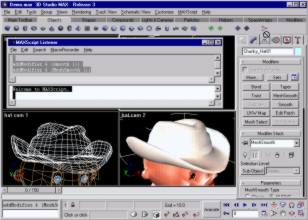
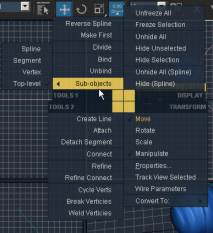 New inverse kinematics, bones as parametric objects, skin deformers, polyobjects,
motion blur, depth of view
New inverse kinematics, bones as parametric objects, skin deformers, polyobjects,
motion blur, depth of view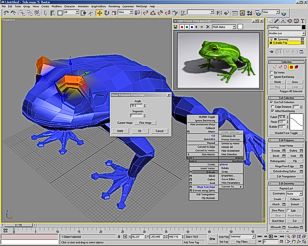 New character animation, new generation of environment for game development (with
support for DirectX 8 and DirectX 9), enhance workflow
New character animation, new generation of environment for game development (with
support for DirectX 8 and DirectX 9), enhance workflow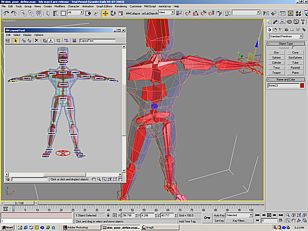 Schematic views
Schematic viewsMore information about 3ds max 7 on Discreet Web site
More information about 3ds max 8 on Autodesk Web site
More information about the latest versions of "Autodesk 3ds Max" on Autodesk Web site